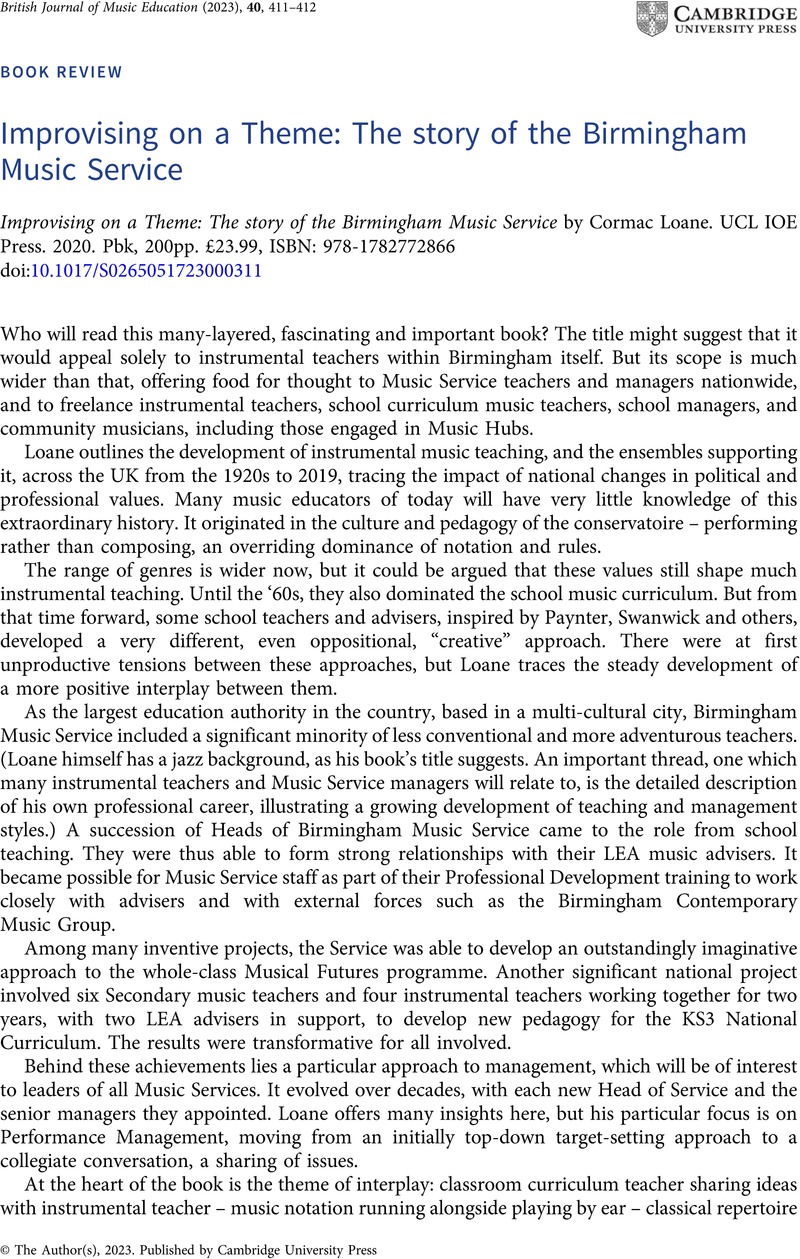No CrossRef data available.
Article contents
Improvising on a Theme: The story of the Birmingham Music Service - Improvising on a Theme: The story of the Birmingham Music Service by Cormac Loane. UCL IOE Press. 2020. Pbk, 200pp. £23.99, ISBN: 978-1782772866
Review products
Improvising on a Theme: The story of the Birmingham Music Service by Cormac Loane. UCL IOE Press. 2020. Pbk, 200pp. £23.99, ISBN: 978-1782772866
Published online by Cambridge University Press: 01 December 2023
Abstract
An abstract is not available for this content so a preview has been provided. Please use the Get access link above for information on how to access this content.

- Type
- Book Review
- Information
- Copyright
- © The Author(s), 2023. Published by Cambridge University Press



